Istanbul to Singapore - Itinerary
The Silk Road –The romantic term given to the fabled trade routes from China to Europe and forever associated with the pioneering travels of Marco Polo in the 13th century. He returned to Venice after 24 years of travelling in Asia and amongst many wonders, recorded having met Kubla Khan (later the subject of Coleridge’s poem, “In Xanadu did Kubla Khan, A stately pleasure-dome decree…”
But it is Genghis Khan who is credited with bringing the Silk Road under the environment that facilitated increased trade between the East and West. What is less appreciated is that the famous ‘Silk Road’ doesn’t refer to just one road –the main route was disrupted by the Mongol hordes but reinvigorated by sailing ships during the later rise of the European powers. It manifests nowadays by way of sea, road and rail.
The Sweep of Scenery & the Heft of History From a Western-centric perspective the whole of the landmass between Turkey and the seaboard of China is called the continent of Asia. But Asia is not a distinct place; many of the cultures, ethnic groups and societies have little in common. Asia as we know it took its name from that which the Romans gave to Turkey, later overrun by the Ottomans. The strategic significance of the Bosphorus, constituting the sole passage between the Black Sea and the Mediterranean, was one of the factors in the building of ‘New Rome’ or Constantinople in AD 330. A diversified Asia stretches ahead: plateaus and deserts, boundless steppes, dense forests & soaring mountain ranges, high rolling plains & crystal lakes. The even higher snowy mountains of Kyrgyzstan eventually gives way to the rocky surfaces of the Great Gobi Desert lead into China.
Culture & Religion – Over centuries, conquering armies swept back and forth causing distinct & vibrant cultures to emerge. The nexus of the Silk Road, Central Asia embraced Chinese, Indian and Arabian literary works and in turn influenced India, Pakistan and China through its cuisine.
Central Asia overflows with folklore and tradition, its music as vast and unique as the many peoples who live there. Specifically, it enjoys a thousand year old oral tradition that takes the form of improvisational poetry set to music. With the fall of the Soviet Union, the practice of singing the epic poems called manas, accompanied by two or three-stringed lutes or fiddles has enjoyed resurgence, to the degree that a similarity between that and modern raphas been proposed! Nomadic and city rugs, silk ikat costumes, embroidered hangings, tent bands, saddle cloths and horse trappings reflect the extremes and interactions of tribal and urban lifestyles; while splendid horse-jewellery reflects the key role of these animals in nomad life.
While the predominant religion of Central Asia is Islam, eastern philosophy and religion plays a significant role, as in Hinduism, Taoism, Confucianism, Buddhism, Taoism and Judaism. These all co-exist in relative harmony.
Food & Drink – As may be expected from such a landmass, there is a huge variation in the availability of foodstuffs, use of spices and cooking techniques yet a constant cross-flow of influences.
The delicious cuisine of Turkey may be the most familiar to the western palate but many foods famously associated with Middle Eastern and indeed world cuisine, have their origins in Iran – such as kebabs and ice cream. Fresh green herbs are used along with fruits such as plums, pomegranates, quince, prunes, apricots, and raisins. Typical main dishes combine rice with meat – lamb, chicken, or fish- and onion, vegetables, nuts, and herbs with the characteristic Persian flavourings of saffron, dried lime and cinnamon. Uzbekistan, locally-made wine is comparatively popular. Teahouses (chaikhanas) are of general cultural importance. Tea, usually green, is taken throughout the day invariably taken, whether green or black, without milk or sugar. A typical festive meal ends with fruit or a compote of fresh or dried fruit, followed by pistachios and halvah with green tea. Traditional Kazakh cuisine revolves around horse-meat as well as the ubiquitous mutton from fat-tailed sheep. Cooking techniques and ingredients are strongly influenced by nomadic lifestyle, notable in the salting and drying of meat and a preference for soured milk.Kyrgyz cuisine is similar in many respects. Although Turkmen cuisine doesn’t generally use spices or seasonings, it is similar to that of the rest of Central Asia in its reliance on pilaf consisting of chunks of mutton, carrots and rice fried in a large cast-iron cauldron, as well as dumplings stuffed with meat, onions or pumpkin. Kebabs in the form of shashlyk are served in restaurants and in the street. Due to the extreme climate, Turkmen cuisine primarily consists of dairy products (fermented yak-milk yogurt is said to taste delicious!) meat and animal fats, but limited vegetables and spices.
Eclectic Architecture – Central Asian architecture is a fusion of architectural traditions, from Tsarist and Soviet Russia to Islamic, Persian and Chinese, providing an unending sequence of spectacular and stately edifices and grand mosques of axial symmetry and double domes, mud cities, fortresses and palaces. The pinnacle of this art form was achieved in Samarkand, eventually giving rise to the celebrated Moghul architecture of India. Domestically, by building wind catching towers and networks of underground canals to bring water from the mountains, clever desert design kept houses cool, long before western air-conditioning. One can’t talk about Asian architecture without referring to The Great Wall of China, a part of which is seen en route to Beijing. In reality a series of defensive walls covering a 13,000 mile line and built over 1800 years by various Dynasties, the walls proved unable to stop Mongol horseman and the all-conquering Kubla Khan became the first non-Chinese Emperor.
Amazing Animals – The two-humped domesticated Bactrian camel has served as a pack animal in inner Asia since ancient times. Tolerant of cold, drought, and high altitudes, it was this animal that facilitated trade along the Silk Road. But, in contrast to the single-humped dromedary of Africa, the wild population has dwindled and is now classified as critically endangered. By contrast, many horse-related traditional national sports reflect the importance horsemanship in Kyrgyz culture. Very popular in all Central Asia, is Ulak Tartysh, a team game resembling a cross between polo and rugby in which two teams of riders wrestle for possession of the headless carcass of a goat. Meanwhile huge herds of horses present a mise-en-scene largely unchanged since the time of Genghis Khan. Although Mongolian nomads own more than 3 million of the animals, outstripping the country’s human population, most are kept roaming free, and only a small number of riding horses are caught and ridden.
Heroes & Villains – places associated with towering historical figures include:-
Gallipoli -notorious for the abortive naval campaign planned by Winston Churchill (at the time, First Lord of the Admiralty) deploying Anzac forces in an attempt to open the way to the Black Sea during WWI. On the other side, former army officer Mustafa Kamal Ataturk, father of the modern Turkish State, cut his teeth in the battle.
Asia Minor, Persia and Central Asia – Alexander the Great, considered one of history’s most successful commanders, defeated Darius III leading to the downfall of the Persian Empire, thereby creating a Greek empire stretching from the Adriatic to the Indus.
Iran – birthplace of the locally revered Ruhollah Khomeini, known in the West as Ayatollah Khomeini who has been described as the “virtual face of Islam in Western popular culture.”
Genghis Khan – By uniting the tribes of north east Asia, he founded the Mongol Empire, which later reached the doors of Vienna and occupied a substantial portion of Central Asia and China. Despite effectively using genocide as a tool of war, present-day Mongolians regard Genghis Khan as their founding father (his name is everywhere, including on bottles of vodka!). However, his grandson, Kubla Khan demonstrated that control could be achieved by showing tolerance towards his subjects.
Turkey - Weeks 1 – 2
Highlights Istanbul, Gallipoli Battle Fields, Troy, Ephesus, Pamukkale, Cappadocia, Nemrut Dagi
We start the trip in Istanbul, old Constantinople on the Bosporus. Must sees are; the Covered Bazaar, the biggest and oldest covered market in the world, the Topkapi Palace, home of the Sultans and harems of the Byzantium & Ottoman Empire, the Blue Mosque and Santa Sophia; a beautiful church converted into a beautiful mosque.
We leave Istanbul for Gallipoli, famous for the allied Anzac WWI invasion, a sea landing designed by Winston Churchill to sail through the Dardanelles water way to Istanbul. The plan was to run the royal navy ships up the Dardanelles to bombard Istanbul, forcing Turkey out of the war, hopefully shortening WWI. You can wander the bleak remains of the battlefields and trench networks.
We cross the Dardanelles by ferry from Europe to Asia and on to Troy. The city was made famous by; Helen of Troy, Paris and Achilles plus the Trojan Horse with a wooden replica now on site – it’s worth a look, though nothing like the one in the film
Ephesus is the largest and best-preserved Roman city on the Mediterranean coast. Nearby are the remains of the Temple of Artemis, one of the seven wonders of the ancient world, though only a few columns remain.
Pamukkale is an ancient flow of mineralised water that has created a hillside of white limestone curtained terraces, with ancient spa pools.
In central Turkey is Cappadocia, a region formed from volcanic ash. In the region the large village of Goreme has churches and monasteries carved into the rock with Christian frescoes and valleys full of chimney shaped houses.
Derinkuyu is a massive underground city, five story’s deep and miles wide, tunneled beneath the plains it is large enough to hold 15,000 people. Here you can buy some of the best value Turkish carpets and pottery in the world.
At Nemrut Dagi you see the huge statues scattered on the mountain. These huge statues were carved from solid rock by King Antiochus.
Georgia – week 3
Leaving Turkey we cross the border to Georgia and the Caucasus and begin the next chapter of our Asian adventure.. Over the next two weeks we will cross this small former Soviet republic and its neighbour, Georgia. For this section the trip will be exploratory in nature, being the first time we have travelled this route in this way, so expect the unexpected and be ready for an adventure.
Our first stop in Georgia, Batumi. We will spend a couple of nights in this port city that has had an important role as a trading post from the second century BC when it was used by the Ancient Greeks as a commercial base.
We leave the Black Sea coast and drive to Kutaisi where we can rest up after some bush camps and enjoy a bed for the night, as well as check out the local cafes and restaurants. Continuing east our next stop is the Safara Monastery, a still-functioning seminary of the Georgian Orthodox Church constructed in the 10th Century AD, with Byzantine-style frescoes and a dramatic location on the edge of an imposing gorge.
Vardzia, a remarkable monastery built into the hillside with great importance in Georgian history through its association with the revered Queen Tamar who ruled over its construction in 1185 AD. The site was only used and populated for a relatively short period, being ravaged and then disused following an earthquake in 1283 and then attacked by first the Persians in 1551 and then the Turks in 1578, and subsequent earthquakes and flooding have seen much of the original site lost, but it remains a fascinating site and well worth visiting; carved into the side of a steep cliff Vardzia is a great place to explore and take some memorable and unusual photos!
We then drive towards Gori stopping on the way at the Uplistsikhe Caves, a remarkable subterranean complex of buildings built into the hillside, with origins as a religious and trading centre just off the Silk Road. At one point its population is estimated to have reached as many as 20,000, living and working in and around the caves. We have some free time to scramble across the rocky paths and find our way through the long-abandoned buildings and try to imagine what it would have been like living in such a unique and unusual place all those years ago.
Gori is a small city that played an important role as a military stronghold with strategic significance throughout the Middle Ages and has been occupied at various points by many different powers throughout its history, giving the city a blend of flavours and influences that have by now become a recognisable feature of our Caucasus adventure. The city is famous as the birthplace of the Soviet leader Josef Stalin; the main avenue running through the city centre and the main town square bear his name. It is possible to visit the Stalin Museum and see the house where the former dictator was born and grew up. This makes for an intriguing experience, with Stalin’s rule and its consequences still very much within living memory.
Our next stop is Telvai, a decent-sized town to the north-east, sat on a hilltop with views across a wide valley with towering, snow-capped peaks visible in the distance. Telavi is the principal town of the Kakheti region, famous for its vineyards and wineries. Wine has been produced in Georgia since 4000BC and wine plays an important role in Georgian culture and society. Here we have the option of taking a wine tour to find out more about the history of the area, why wine production has been so important, and of course to try some ourselves!
Telavi itself is a fascinating and relaxing place to spend a couple of nights with many good restaurants and cafes, and not far from the town there are other sites well worth a visit, such as the monastery of Akhali Shuamta, and the small village of Ikalta and its Church of the Transfiguration which dates from the 8th Century BC.
After a bush camp in rural Georgia we arrive in the capital, Tbilisi. Sat on the River Mtkvari and surrounded by mountains on three sides with a combination of modern and historic architecture, this calm and photogenic city is our base for the next couple of days. Strolling the streets and people-watching in the many imperious squares of the city, with their mix of Russian, Classical and Soviet architecture, peppered with churches and cathedrals, is a pleasant way to spend a day.
Armenia – Week 4
Armenia, a country of just over 3 million people, the size as Belgium. In the South Caucasus; stunning mountains, rich verdant landscapes, rich and varied history, and a unique and strong sense of nationhood with an international importance that belies its small size and location, almost ‘hidden’ amongst larger neighbours in Turkey and Iran.
We head to Sevanavank, a monastery complex on the shores of Lake Sevan that dates back to the ninth century. Formerly situated on an island, following the draining of the lake as during the time of Stalin’s rule, the monastery is now sat at the end of a small peninsula and is a picturesque spot well worth a short detour.
We reach the country’s capital Yerevan. This will be our base for three nights; strolling the streets of the city’ central area the combination of Armenian and Soviet architecture shows the country’s more recent history while the nineteenth-century Blue Mosque reminds us that we are in a part of the world where Islamic influences and cultures are prevalent.
There is also the option of a day trip to view Mt Ararat a stunning snow-capped volcano to the south-west of the city. Though the volcano itself is in Turkey, we are able to see it and explore the beautiful mountainous Ararat region while still in Armenia. It is also possible to visit Yerevan’s famous brandy distillery for a tour and of course to sample the national drink.
Iran - Week 5 - 6...
Iran; the Persia Empire is today the Islamic Republic of Iran. Though women do need a form of chador (covering) to enter Iran, it does not have to be black. A colourful scarf and trench coat are good enough……Though this country its often thought of by some westerners as an ominous anti-western state; the people are friendly; they like talking to tourists and within live many religious groups. Not everyone is actually Persian; there are; Turks, Baluchi, Arabs, Kurds, Jews, Christians, Zoroastrians, Baha’i, Nestorians and others, all living amicably. The architecture is some of the best in the world
Highlights - Esfahan, Shiraz, Persepolis, Yazd, Great Salt Desert, Caravanserais, Mashed
From Armenia, we enter north western Iran to Tabriz. Wander through the bazaar the Blue Mosque and Elgoli Park.
To Qazvin with massive domed Cisterns, this once stored and cooled the city’s water. Relax in one of the subterranean bathhouses. Tehran is one our route; its big and smoggy. The best things to see here are the Treasury of the National Jewels with diamonds, the Peacock Throne and the Mausoleum of Ayatollah Khomeini
Heading south, we pass through; Qom, Kasham and Abyaneh on the way to Isfahan. Here we’ll spend a few days in the old capital of Persia - beautiful mosques, squares, the stone arched Khaju Bridge with its royal pavilion in the middle, palaces with gardens and caravanserais
Further south to Shiraz; considered to be Iran’s best city with; mausoleums, the colourful covered Vakil Bazaar. Shiraz has a large Christian and Jewish population
Just outside of town are the ruins of Persepolis; the ancient capital of Persia. It was burnt to the ground by Alexander the Great - in a typical Macedonian evening of drunken debauchery. That’s how the Macedonians behaved in ancient times
The Silk Road follows in the footsteps of Marco Polo to Yazd. The fourth largest ethnic group in Iran after Muslims, Christians and Jews are the Zoroastrians - Yazd is their hometown. Here there is a Tower of Silence and a Fire Temple, which has had its fire burning for two and a half thousand years. Zoroastrians bury their dead in the ‘sky’; leaving the bodies out in their Towers of Silence to be eaten by birds. The city is built mainly from adobe mud bricks and is the best example of old Persian architecture; with wind catching towers cooling the houses and an ancient network of underground canals bringing water to the town from mountains
We cross Dasht-e-Kavir; the almost uninhabited Great Salt Desert to Kermin and visit the castles in the desert. To the north of Iran visiting the holy city of Mashed and on to Turkmenistan
CENTRAL ASIA – Turkmenistan, Uzbekistan, Kyrgyzstan & Kazakhstan
Horses been ridden by a nations of horsemen with incredible skill on the saddle - they can ride alone before the age of five.
Turkmenistan - Week ...6
The recently passed dictator had the capital city Ashgabat made in white marble. The rest of the country is a beautiful empty dessert, with nomads in their yurts.
Highlights - Ashgabat, Darvaza Gas Craters, Konye-Urgench
The economy is run off its vast reserves of oil and gas which lies beneath Central Asia’s largest desert; the Karakum or Black Desert. First stop the capital Ashgabat with enormous monuments and extravagant buildings made entirely of white marble.
We visit Darvaza Gas Craters, or the ‘Doors to Hell’, it’s a drilling operation gone wrong, which opened a massive hole in the desert; from which the natural gas came out – it was lit to get rid of the dangerous gas and it’s been burning for 40 years.
Kanye-Urgench on the northern border is a ruined town, with old monuments. Is was the scene of one of the biggest massacres in human history by Genghis Khan; this start of his killings led to the death of over 70 million people; some 17% of the world population
Uzbekistan – Week 7 - 8
The heart of the ancient Silk Road
Highlights – the beautiful cities of Khiva, Bukhara and Samarkand are the main highlights not only Uzbekistan but of the whole of Central Asia
Khiva town is one of the best preserved of the in Central Asia the Old Town is within a massive mud brick fortress. Climb the towering minarets and sit in the tranquil old mosques. We cross the desert and the Amu Darya River, (known in ancient times as the Oxus), to Bukhara. Its old centre with easy to get lost in narrow winding streets, mosques, medievel royal fortress and a bazaar complex; its a UNESCO World Heritage Site. Samarkand was once the most populous city in the world; its 2,500 years of history old rivaling Rome in importance; now its attractions are really big colourful mosques, markets and the impossibly big public square called ‘Registan’ or sandy place in Persian. This was made when public squares were for public announcements and executions. Onto the capitol Tashkent and east, transiting through Kasakhstan into Kyrgyzstan.
Kazakhstan – Week ...9
One of the larger countries in Asia - it extends into Eastern Europe; the people are a mix of Mongolian and Russians. The capital Alamaty; is named after apples, which is where they first grew.
Highlights – the size of the place; the 9th largest country in the world
We cross to Kazakhstan and Aksu-Dzhabagly Nature Reserve the oldest nature reserve in Central Asia; stunning scenery of green valleys, rushing rivers and snowcapped peaks. Look out for the Himalayan brown bear.
Kyrgyzstan – Week 10 - 11
A land of high mountain passes, grassy plains, alpine lakes & yurts, all in the Celestial Mountains. The beginning for us of a strong Chinese influence.
Highlights - High altitude Lake Song Kol and Ala Archa National Park.
As big as England with just 5 million people; there is space to wander. We visit the capitol Bishkek You can go walking and horse trekking around Lake Issyk Kul.
We visit the vast red stone cliffs in Jeti Orguz or ‘Seven Bulls’ and visit the town of Karakol with its beautiful Russian wooden houses and tree-lined streets. Nearby are the Terskay Ala Too Mountains, a wilderness with nomadic shepherds.
Continuing around the lake to Semenovskre Gorge you can go walking and follow the rivers that wind through the national reserve.
On to Ala Archa National Park; forests, glaciers and alpine streams and go camping amongst the nomads in their yurts.
China – Week 12 - 16
China invented everything we like; Chinese food (stir fry and fried rice), chopsticks, fireworks, goldfish, tea, toilet paper, kites, paper money and hundreds of other things.
Highlights –Kashgar, Taklamakan Desert, Turpan Oasis, Gobi Desert, Yellow River, Chengdu city, Giant Pandas, Xi'an Terracotta army, Beijing, Tiananmen Square and the Forbidden City or Palace.
From Kashgar we cross the Taklamakan and Gobi Deserts, visit a Buddhist Monastery, Giant Pandas, Xi'an’s Terracotta Warriors, the Great Wall of China and reach Peking where the best things to see are Tiananmen Square and the Forbidden City or Palace.
Cross the border to China over the high Torugat Pass to high plains with nomadic Kygys people with their yurts and horses. Kashgar – is a major trading point on the old Silk Road. Big bazaars, markets and old tombs. Down the Karakorum Highway to beautiful Lake Karakol, nestled in the desert below snow covered mountains.
Into the Taklamakan Desert – a dry massive desert of slowly moving sand. We spend a few days on the northern edge of this long desert.
To Kuqa and the Kizil Thousand Buddha Caves, these caves were carved into the cliff face over a period of 1,700 years; all overlooking the Muzat River, a broad river running through this dry country.
On to the ruins of Turpan, a revitalized oasis town, hot weather and good irrigation produces trellised vine s and the best grapes and raisins in the world. On a nearby plateau are the ruins of Jiaohe; a city destroyed by the Mongols under Genghis Kahn.
We cross the Gobi Desert visiting oasis towns of Dunhuang to visit Ming Sha Hill and the Crescent Moon Pool. Spring water flows into a depression between huge sand dunes, forming a picture postcard crescent-shaped lake.
The Great Wall of China spreads across a great many parts of the country. Jiayuguan Fort built in the Ming Dynasty is the westernmost section lies at the walls most western end
Over the Tibetan Plateau and Yong Jing, and take a ferry across the Yellow River to the Bingling Grottoes and Temple; a series of Buddhist caves and statues cut into the cliff face. Wander through the site by following walkways perched on the cliff face high above the river.
Huanglong National Park or in Chinese; Yellow Dragon Valley there are colorful pools formed by calcite deposits, snow-capped peaks, waterfalls and hot travertine springs. Go hiking and warm up in the natural hot pools. http://www.huanglong.com/
Chengdu is our first really big city in China with something around 14 million people. It’s the capital of Sichuan province and the home of the spicy Chinese food. The Giant Panda breeding centre is here, so if you want to see one of the baby bears up close. The film Kung Fu Panda was set in this city. It’s an attractive modern city and worthwhile spending time to wander around, and to visit the Wuhou Temple & Wenshu Monastery.
To Xi'an and the Terracotta Warriors; 8,000 life size terracotta soldiers and horses lay buries for 2,000 years. They are all unpainted as when they are unearthed and exposed to the air, within just two minutes the ancient colourful paint job fades and flakes off. Also you can see a relic of the Buddha, a finger bone at Famen Temple.
From Xi’an to Beijing by a full days train ride - Go see the Great Wall of China and reach Peking where the best things to see are Tiananmen Square and the Forbidden City or Palace and Temple of Heaven.
Revisiting Xi'an and the Terracotta Warriors; 8,000 life size terracotta soldiers and horses lay buries for 2,000 years. They are all unpainted as when they are unearthed and exposed to the air, within just two minutes the ancient colourful paint job fades and flakes off. Also you can see a relic of the Buddha, a finger bone at Famen Temple.
Chengdu is our first really big city in China with something around 14 million people. It’s the capital of Sichuan province and the home of the spicy Chinese food. The Giant Panda breeding centre is here, so if you want to see one of the baby bears up close. The film Kung Fu Panda was set in this city. It’s an attractive modern city and worthwhile spending time to wander around, and to visit the Wuhou Temple & Wenshu Monastery.
We take an overnight train to Kunming or Spring City in Yunnan Province. One of the prettier cities in China with tree-lined boulevards and Tang Dynasty Pagodas and the 8th century Yuatong Temple. In the south of China is Jinghong. A small city on the Mekong River, we often follow the river through Indochina to the Mekong Delta near Saigon in Vietnam.
Southeast Asia
Week 17 - 18 Laos
We enter Laos, with verdant tropical landscapes dotted with thick, forested hills and sleepy towns and cities. Its rich history and varied culture make it a fantastic country to explore. Our first stop is Luang Namtha, with surrounding jungle and hills with hikes, rafting and overnight village stays.
After two nights in Luang Namtha we head to the old royal capital of Luang Prabang, stopping en route in the small town of Nong Khiaw, on the Nam Ou River set below imposing limestone cliffs with caves and Hmong villages.
In Luang Prabang, our base for the next four nights, we rejoin the Mekong River to explore its many temples. The town is a UNESCO World Heritage site. You can hire a bicycle and explore the streets by yourself, visit the Pak Ou Caves take a cooking course or just take a seat in one of the many bars or cafes and watch the Buddhist Monks, local traders and local life unfold in front of you.
South to Vientiane, a relaxed capital city where we get our visas for Vietnam. We leave the city behind us and return to the wilds of Laos as we reach Phu Hin Bun National Park where we take a longtail boat up the river into some spectacular caves and stay in a rustic bush lodge overlooking the river. We continue to follow the river south to Savannaket, a decent-sized town with a sense of faded colonial splendor as crumbling French buildings slowly give way to modern Laos.
Week 19 Vietnam
To Vietnam and Hue, one of countries cultural and religious centres on the banks of the Song Huong or Perfume River. The Citadel - Kinh Thanh and the opulent tombs of the Nguyen Emperors are UNESCO World Heritage Sites, and for those interested in more recent history can visit the Demilitarized Zone (DMZ) from the Vietnam War.
We head south to Hoi An, known for its Old Town, crossed by canals and multicultural history as a key trading port throughout Vietnam’s history. There are nearby white sandy beaches We continue to beach hop down to Ho Chi Min City.
Ho Chi Minh City, still well known as Saigon. A busy city with countless motorbikes swarming through its crowded streets and plenty to do for a couple of days. Visit the War Remnants Museum or Reunification Palace, take a day trips to the Cu Chi Tunnels, where the Vietcong dug out an underground network of supply lines during the war and to the Mekong Delta, where this mighty river finally ends its long journey into the sea.
Week 20 Cambodia
Cambodia is a stunning country, which is also home to one of the greatest ancient wonders to be found in the world: Angkor Wat.
We spend three nights in the capital city of Phnom Penh. Visit the Royal Palace and Silver Pagoda, and the reminders of Pol Pot’s brutal regime at the Genocide Museum and the Killing Fields.
Phnom Penh is a busy city neon signs mixed in with French Colonial buildings, it’s a great city to just wander around and enjoy great food and nightlife.
Leaving Phnom Penh we stop for two nights in Battambang city on the banks of the Sangkae River. This city has some more great temples and Buddhist shrines to explore, including the Bamboo Railway.
From Battambang by boat, motoring along the Tonle Sap Lake up the river to Siem Reap and Angkor Wat. This abandoned temple is the world’s largest religious monument. The Temples of Angkor are massive and it’s easy to get away from the crowds and wander the far reaching sites alone.
Week 21- 22 Thailand
From the border crossing to Bangkok, the sea level capital of Thailand. Bangkok has plenty to keep us occupied, from very modern shopping malls full of western brands to ancient palaces and monuments. We visit the Grand Palace and the Temple of the Emerald Buddha. We spend three nights in Bangkok, so there is time explore the many canals on a Khlong Tour, visit one of the weekend Floating Markets, or walk down Khao San Road.
From Bangkok we head west to Kanchanaburi, famous for the Bridge on the River Kwai. Built by Allied prisoners of war during the Second World War the bridge was made famous in the film ‘Bridge on the River Kwai’. It is possible to cross the bridge, and visit the allied war graves.
After two nights in Kanchanaburi we overnight bus to down the peninsula to Surit Thani and start our beach week on the tropical islands.
From Surit Thani we take a ferry to one of the off shore islands; Koh Phan-gan or Koh Samui. Relax on the beach do a full moon party, go scuba diving, and great island night life.
Beach week in Thailand is not included in the trip price, so you decide where you want to stay and go on the islands.
Week 23 - 25 Malaysia, Indonesia & Singapore
Back to Surit Thani on the mainland and on to Malaysia. Malaysia is a very well run ex British colony with a real ethnic diversity of Indigenous Malays Chinese and Indians. Our first stop is Penang, for two nights before flying to Medan, just across the Strait of Malacca to Sumatra, in Indonesia - this flight is not included and is booked on the spot.
It is Sumatra’s lush jungles, one of the richest ecosystems in the world, steaming and rumbling volcanoes and blue crater lakes which make this part of the world fascinating and so different from everything else experienced on the expedition to date.
As we head into the interior of the world’s sixth largest island our destination is Lake Toba, high in the volcanic peaks and home to the Batak. The lake covers an area of 1707 sq km and we head for the island in the middle of the lake called Pulau Samosir which is almost the same size as Singapore. The island offers many different options but the best way to experience it is to head off and explore the countryside; go swimming, trekking, learn Indonesian cooking.
In the jungle of Sumatra at Bukit Lawang is an Orangutan feeding station, one of many to help these impressive primates feed as so much of their jungle home has been cut down for logging and human settlement.
With feeding stations the orangutans don’t upset the locals human beings by raiding their fields. From the feeding station you can walk through the jungle to visit the orangutans in their own forest homes
The capital of Sumatra is Medan; we spend time in this particularly Indonesian city before flying back to Malaysia
Georgetown on Penang Island was formerly the Malayan base for the historic East India Company, it’s a great spot to take a wander amongst the colonial buildings and see the impressive street art. Great food; with Indian, Chinese and Malay.
From Penang we cross the Malaysian peninsula to the island of Pulau Perhenthian; great for snorkelling and diving, with turtles and little friendly sharks just off the shore.
Kuala Lumpur is the capital of Malaysia. There is the colonial area around Merdeka Square, the chaos of Little India and Chinatown with its famous Jalan Petaling market. Go to the top of the very very high Petronas Towers, though for the best views of the city, KL Tower is only a short walk away.
South to Melaka, an historical trading post with a mix of Malay, Portuguese, Dutch and British culture and peoples. Take a boat trip on the Malacca River, explore the museums, temples and churches, climb the hill to St John’s Fort or take a trip out to the Melaka Zoo.
Our last few days on the trip are spent in Singapore. It’s well planned and easy to get around with massive shopping malls where you can spend the day watching films, eating and going for a swim on the beach at Sentosa Island. Then to the Raffles Hotel to try the mixed cocktail of Gin, Cointreau and pineapple juice; commonly known as a Singapore Sling.
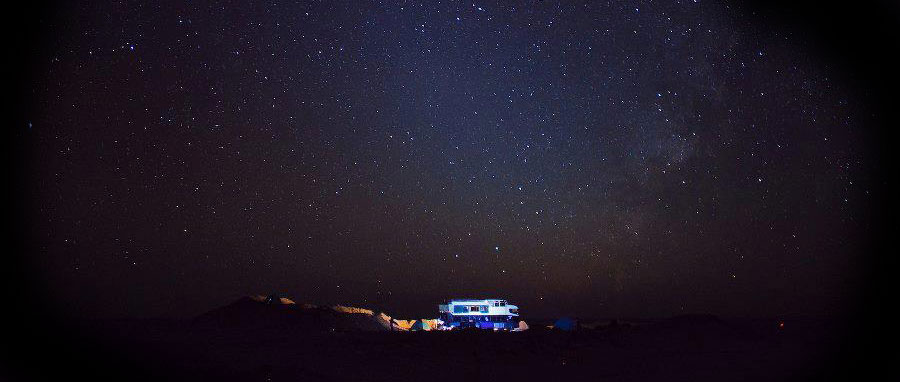
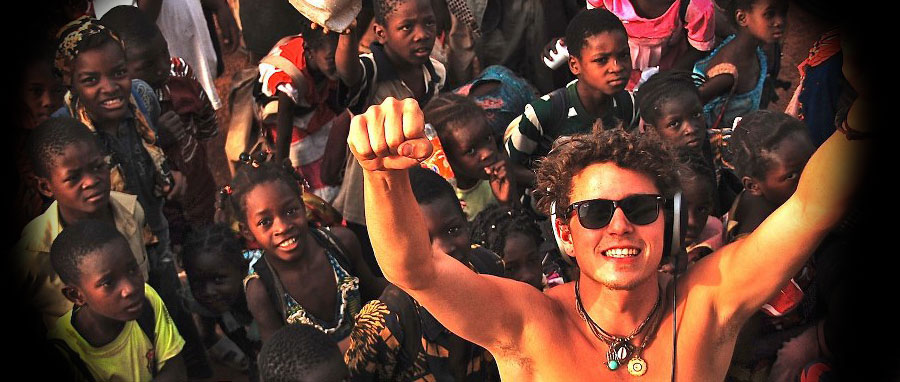
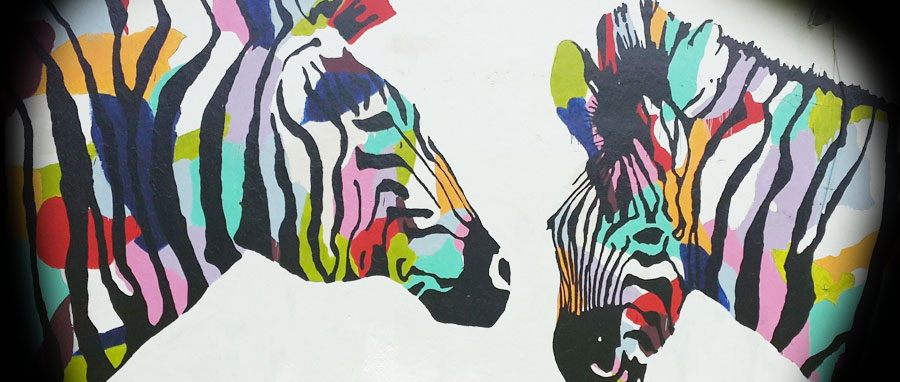
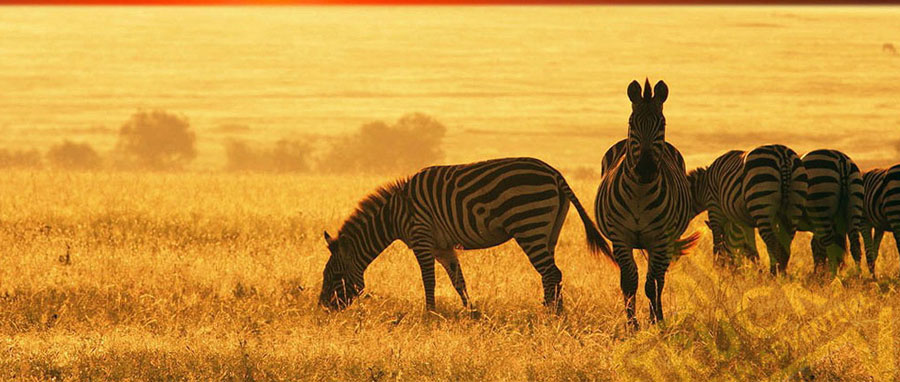
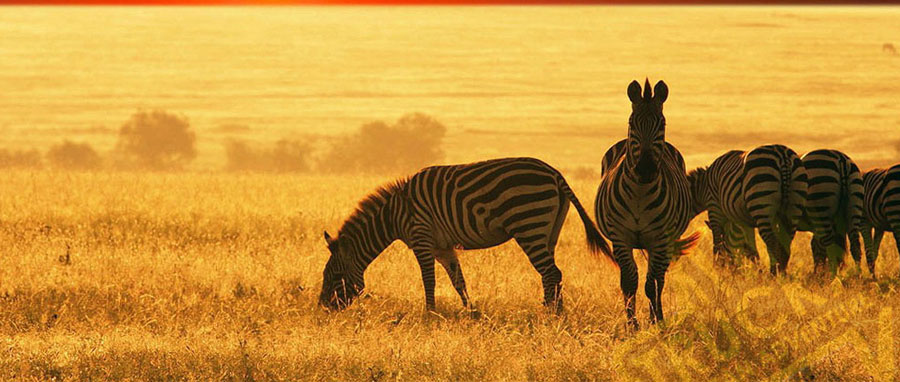
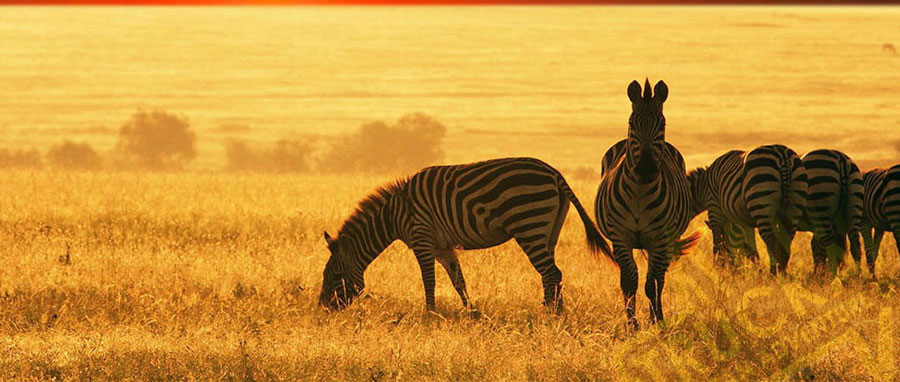
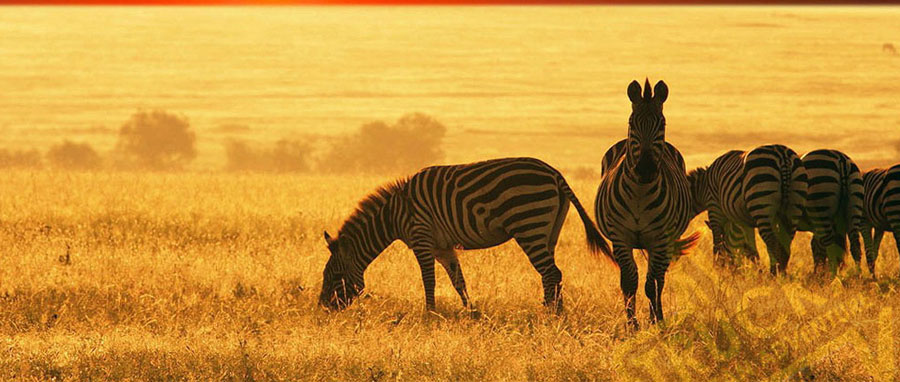
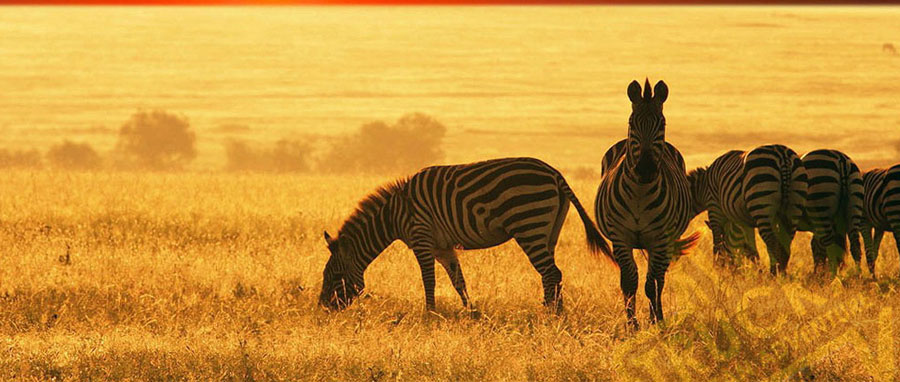
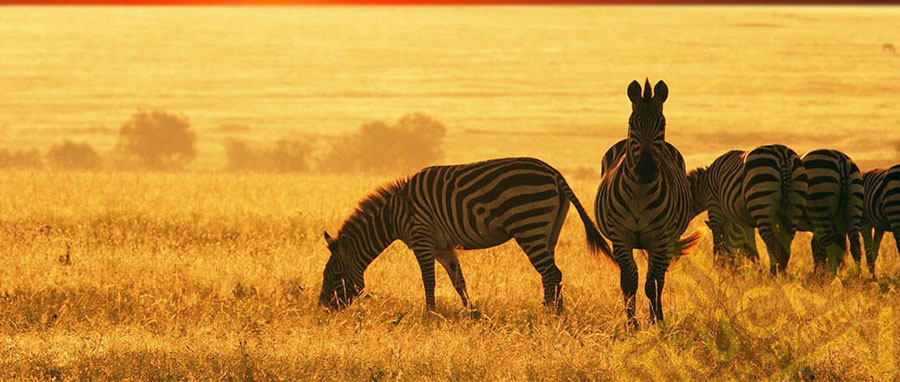



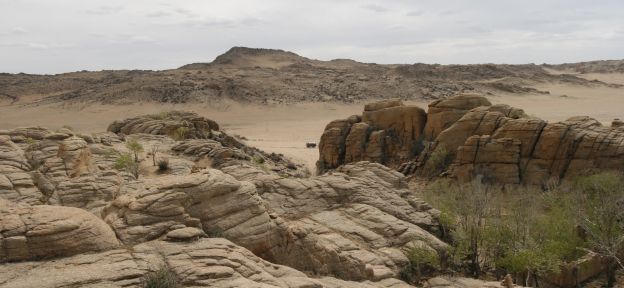
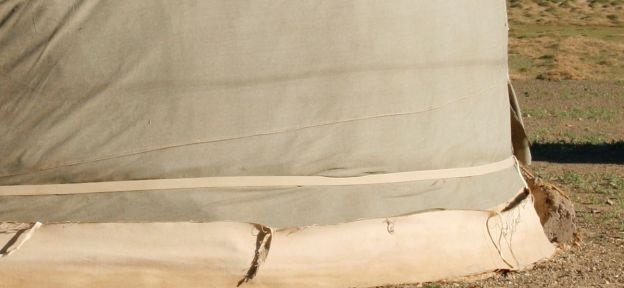
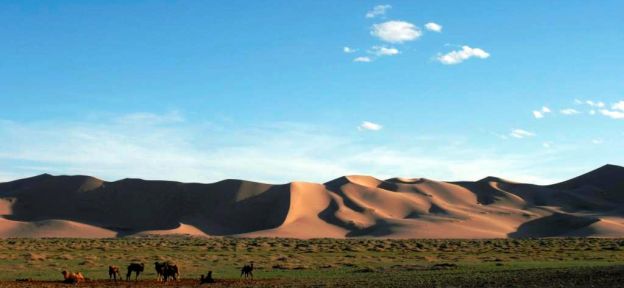
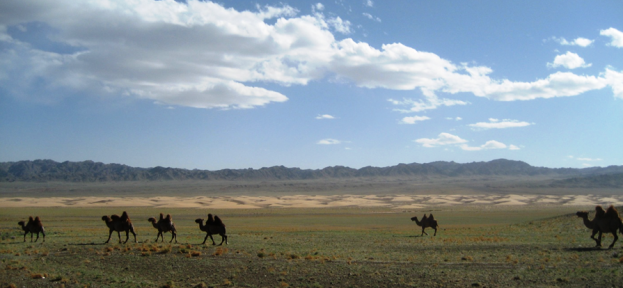
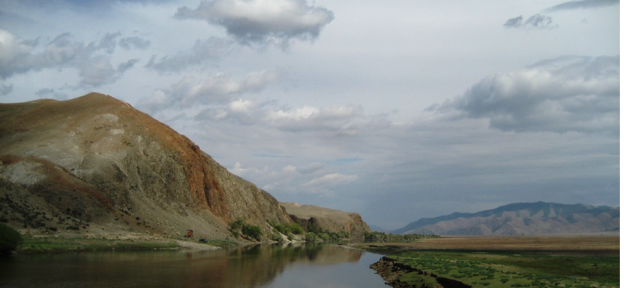
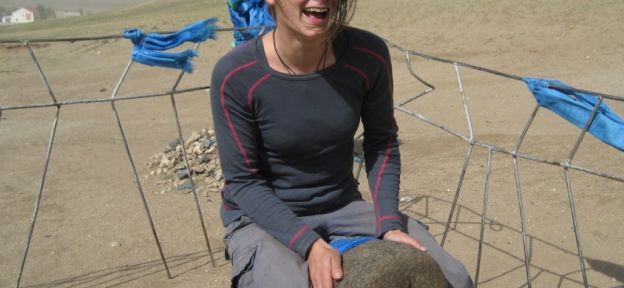
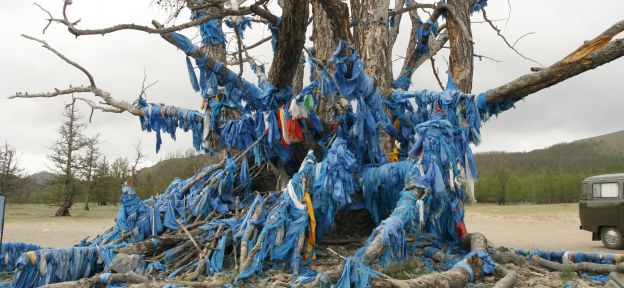
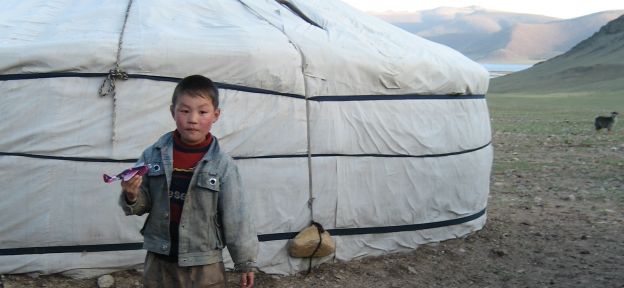
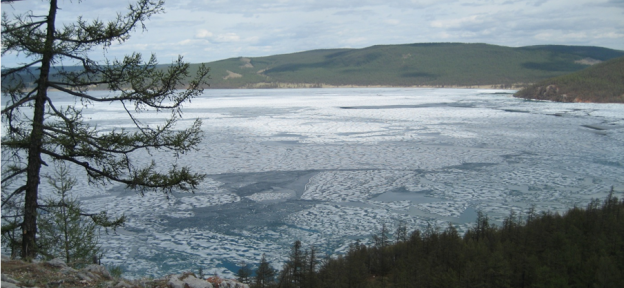
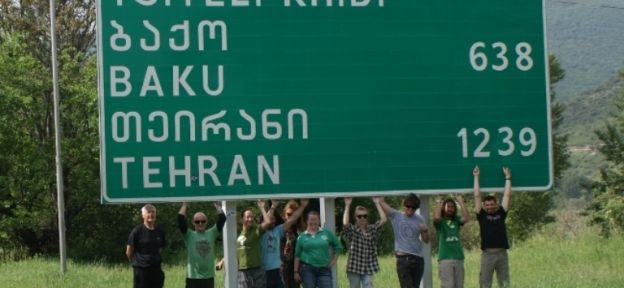
_adaptiveResize_624_288.jpg)
_adaptiveResize_624_288.jpg)
_adaptiveResize_624_288.jpg)
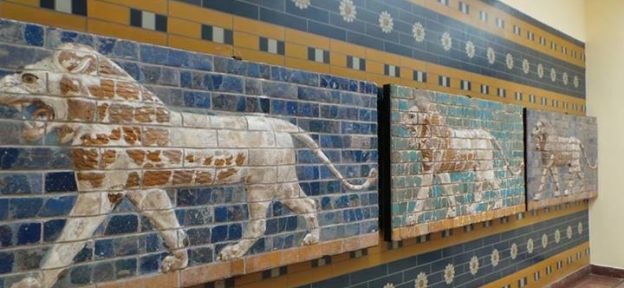
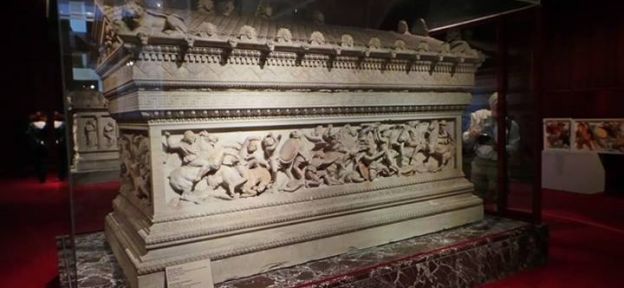
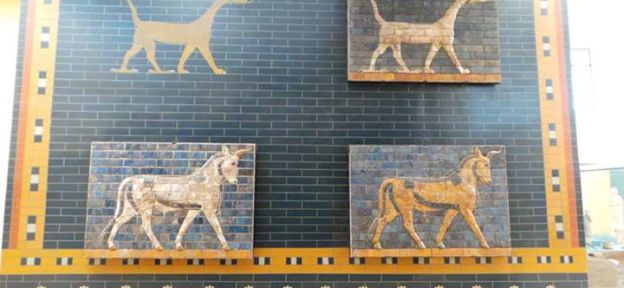
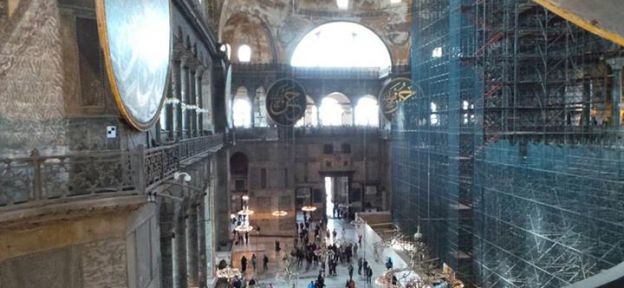
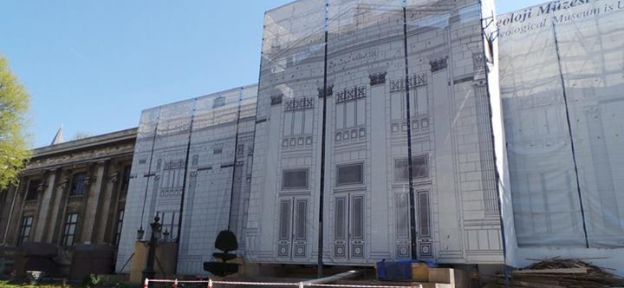
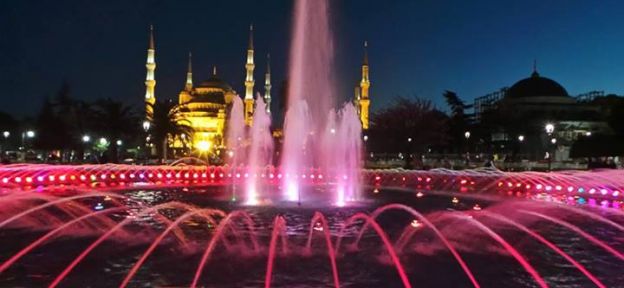
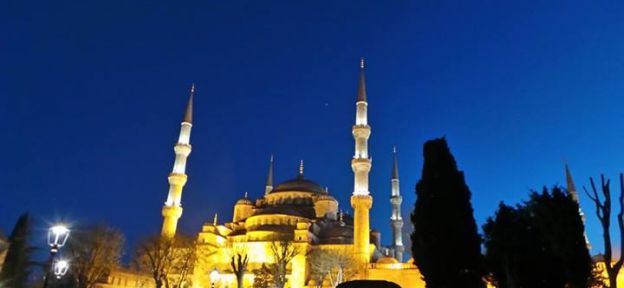
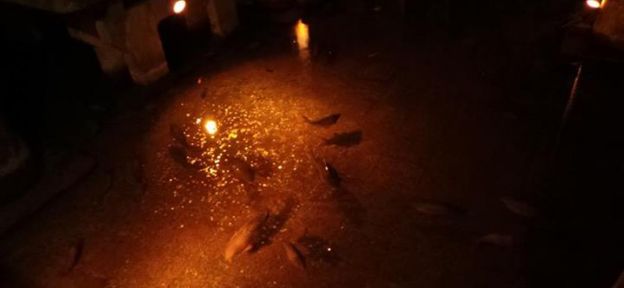
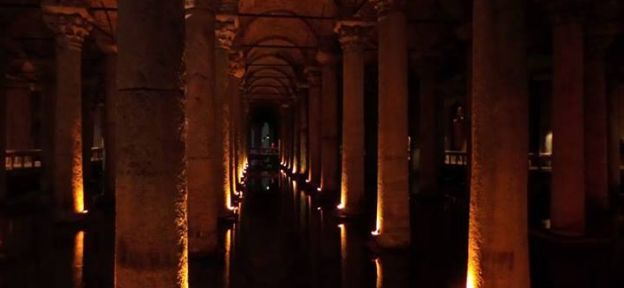
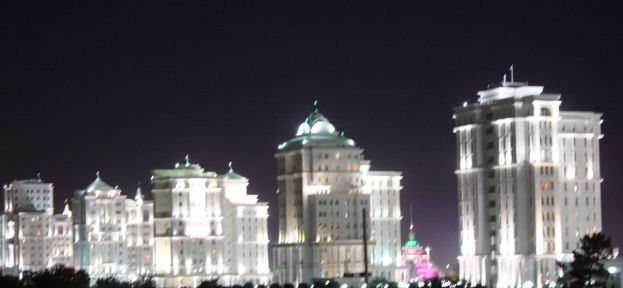
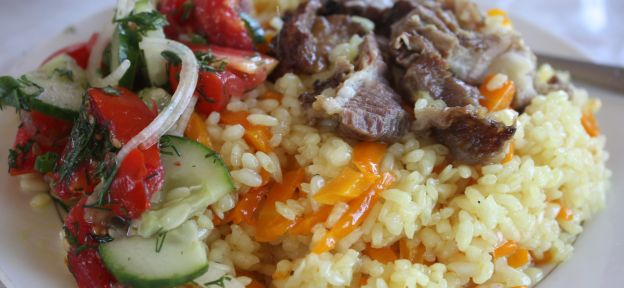
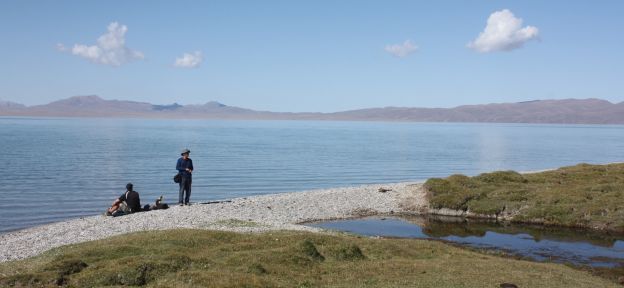

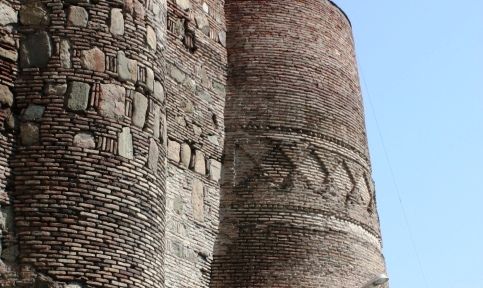
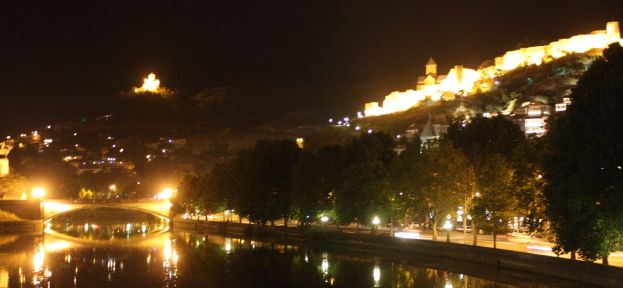
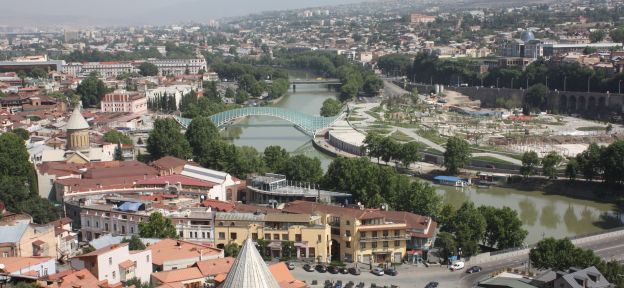
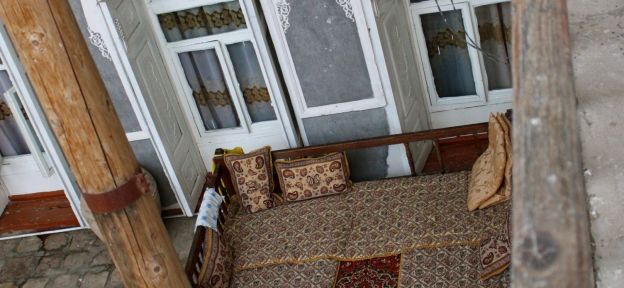
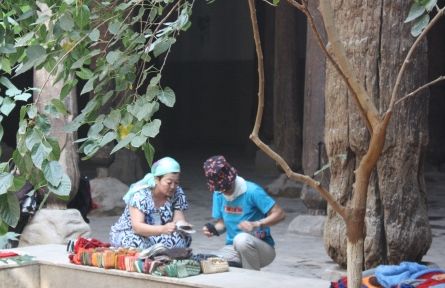
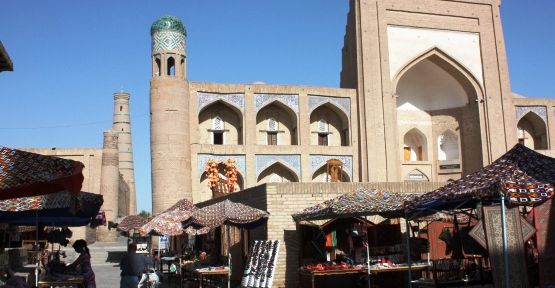
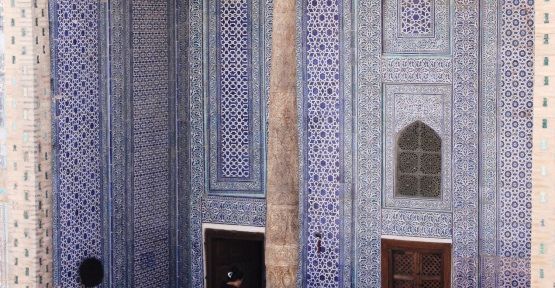
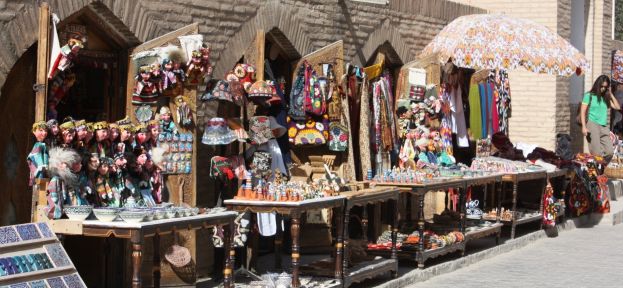
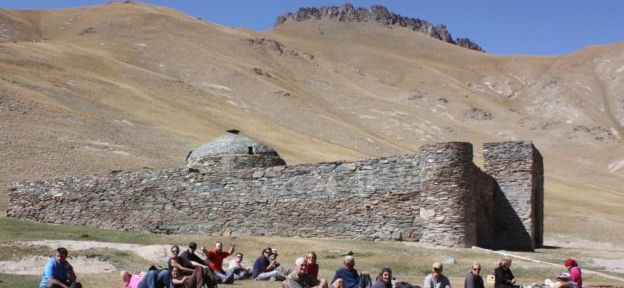
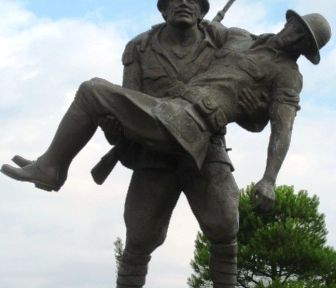
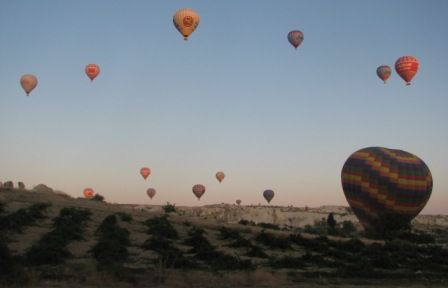
 Print this Page
Print this Page